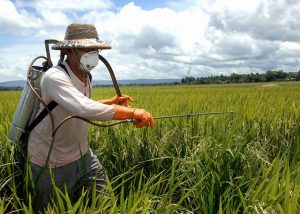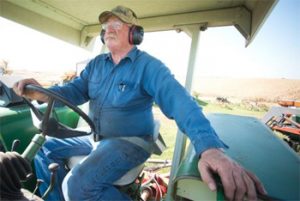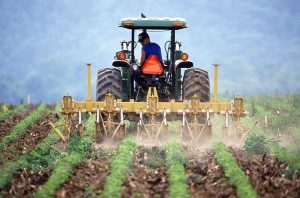Health Hazards in Agriculture and Methods of Protection
Spring is around the corner, and agricultural workers are getting ready for a new season of working long days in the field. Agricultural workers maintain crops and take care of livestock and usually perform their duties outdoors in various weather conditions. There are numerous health hazards that should be considered before starting work. Workers’ safety protection begins with engineering controls, which include measures that prevent employees’ exposure to work-related hazards. In addition, employers have to provide reliable PPE to all workers that could be exposed to these hazards at job sites.
Farm workers are exposed to numerous safety, health, and environmental hazards. As a result, they may suffer from respiratory and skin diseases, noise-induced hearing loss, chemical toxicity, and cold- and heat-related illnesses.
Here is a list of top 7 hazards and protective solutions:
1. Respiratory Hazard

Good respiratory protection is a vital necessity for agricultural workers. The most common respiratory illness is Organic Dust Toxic Syndrome (ODTS) with flu-like symptoms: fever, headache, and muscle pains caused by inhaling dust from moldy hay, straw, or grain. Another danger - exposure to low levels of NO2, H2S, and NH3 - will result in the lung and eye irritation, dizziness, drowsiness, and headaches, while exposure to high levels of H2S and NO2 can cause unconsciousness or even death. The best way to prevent respiratory diseases is by wearing a well-fitted respirator and using a gas monitor.
2. Confined Space Hazards
Confined spaces with limited means of entry and insufficient ventilation, like manure pits, tanks, and storage, present the danger of toxic and explosive gas accumulation. Methane (CH4), Hydrogen sulfide (H2S), Carbon dioxide (CO2), and Ammonia (NH3) produced as a result of decay, create a toxic, oxygen-deficient, and explosive atmosphere. Surprisingly, many farm workers are unaware of these hazards. To prevent accidents, warning signs should be posted around all manure pits, explosion-proof ventilation equipment must be used in addition to wearing the proper PPE and using gas detectors.
Mechanical devices, such as winches, hoists, and pulleys, should be available for immediate removal of workers from a pit in case of emergency. Remember to always have a rescue plan and rescue equipment in place. Wear a harness or a safety belt in conjunction with a lifeline when entering a confined space. It is important to secure the end of a lifeline to the mechanical lifting equipment. The use of a harness or safety belt with a lifeline is critical because it is the only safe means for a standby person to rescue a worker from the pit. Never try to enter the pit with the intent to rescue workers trapped inside without putting on proper respiratory protection first, such as an SCBA. Cover all pit openings with metal grill covers to prevent accidental falls.
3. Chemical Hazards
In its Pocket Guide to Chemical Hazards, the National Institute of Occupational Safety and Health identifies around 450 organic substances against which skin protection is required. Wearing safety PPE prevents skin contact with pesticides and other chemicals that can cause dermatitis and other skin diseases. Working in the environment where chemicals are handled requires using appropriate respiratory protection, and safety clothing - gloves, hats, boots, coveralls, and glasses. Wearing well-fitted, NIOSH-approved respirators when working with chemicals will eliminate the danger of inhaling harmful agents.
It is important to know that facial hair and glasses may prevent a respirator from providing a perfect seal. It this case, you have to get a mask specifically designed for those who wear glasses or have facial hair. Also, keep in mind that all clothes worn while handling chemicals should be washed separately from other clothing items to prevent cross-contamination.
4. Hearing Loss

Hearing loss prevention is an important part of agricultural workers’ safety program. Workers need to be aware if noise levels in their workplace exceed the permitted level of exposure. They can use noise monitors and sound meters to measure noise levels. When noise exposure level is higher than 85 dB, the workers must put on ear muffs or ear plugs. With extremely high levels of noise, it is advisable to combine these two for added hearing protection. Ear muffs can be equipped with a headband, a behind-the-head or under-the-chin band, and a neckband, and some ear-muffs can be mounted on hard hats.
5. Heat and Cold
Extreme weather-related injuries include sunburn, heat stroke, dehydration, or hypothermia. To prevent heat-related illnesses, provide a good ventilation system, cooling vests, shade, and plenty of water for workers. To protect against cold, workers should dress in layers, wear gloves, hats, and insert heat packs into shoes and gloves to warm up faster, drink hot beverages, and take frequent breaks from work by staying inside.
6. Animal-Acquired Infections and Related Hazards
Injuries inflicted by domestic animals include bites, kicks, and transmission of certain infectious diseases such as salmonella, ringworm, and leptospirosis. Personal protective equipment against these hazards includes respirators, gloves, glasses, protective headwear, as well as appropriate safety clothing.
7. Heavy Machinery Operation

Heavy machinery used in agriculture includes tractors without roll-over protection structures, power take-off shafts, chainsaws, motorbikes, and machinery with unguarded moving parts. Improperly operating these types of equipment may cause musculoskeletal disorders and serious injuries. Thorough training and following safety standards help prevent serious injuries.
Following these simple steps will allow you to stay safe while working on the field. Our safety experts are here to help you find the proper protection solution for your specific application. Call us at 800-829-9580, or visit us online at pksafety.com.
Resources:
- Agricultural Operations. Hazards and Controls
- Health Hazards in Agriculture – An Emerging Issue
- Global Estimates of Fatal Occupational Accidents
- Preventing Deaths of Farm Workers in Manure Pits
- Skin Exposures and Effects
Recent Posts
-
Promoting Safety: National Work Zone Awareness Week is April 15-19, 2024
Each year, the National Work Zone Awareness Week (NWZAW) places the spotlight on the importance o …Apr 11th 2024 -
Understanding 4 Gas Monitors: How They Work & Why They Are Important
In today’s increasingly dynamic industrial landscape, 4 gas monitors have emerged as critical com …Apr 8th 2024 -
April Showers Require Workers to Wear Hi-Vis Safety Rain Gear
While April showers bring May flowers, they also bring challenges, particularly for those working …Apr 1st 2024





